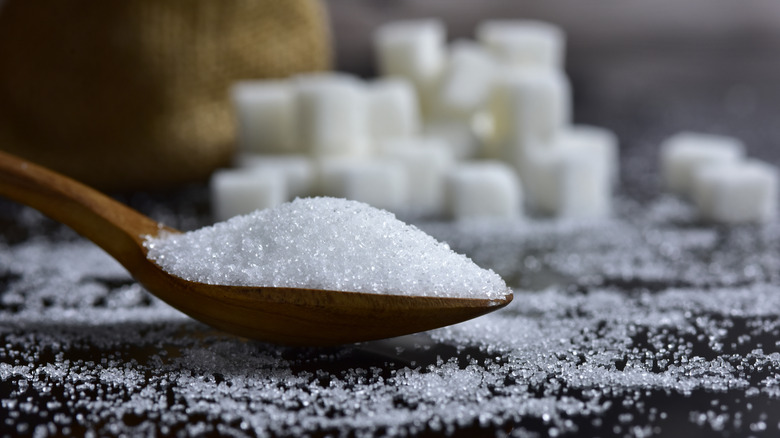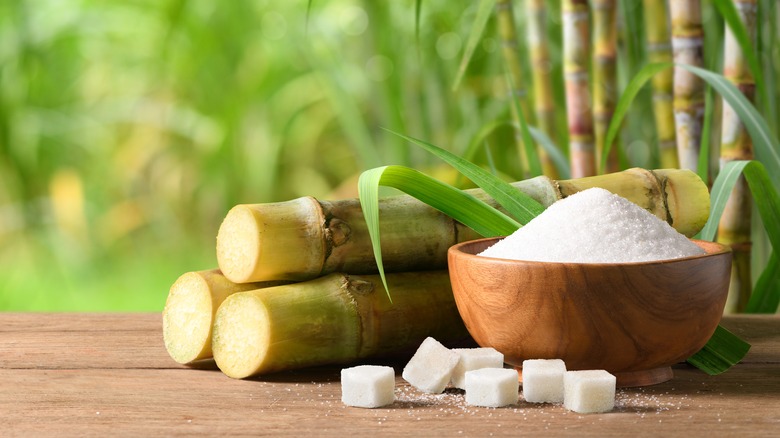Unfrosted Was Right: There Was A Sugar Shortage In The '60s
Jerry Seinfeld will forever be known for his namesake TV show, but he occasionally ventures into the movie business. His first such venture, 2007's "Bee Movie," has mediocre ratings on Rotten Tomatoes. However, his latest venture, the direct-to-Netflix "Unfrosted: The Pop-Tart Story," seems to be faring even worse with audiences. While it may not be the last word in unauthorized toaster pastry biopics, it delivers some fun historical trivia: The early 1960s saw a sugar shortage. Depicting a space race-like pastry rivalry between the brands Kellogg's and Post, the film's events are even set in 1963 — the same year the real-life shortage occurred.
That not-so-sweet situation was motivated by politics. The U.S., upset by the outcome of the 1959 Cuban Revolution, banned the import of sugar from Cuba. As America had long relied on Cuba for much of its sugar supply, this impacted the product's availability, as did rising worldwide demand. This may have been connected to the fact that some countries — including the U.K. — extended WWII rationing well into the 1950s, but by the following decade such restrictions had ceased. Adding to the problem was that the U.S.S.R., which bought all of the surplus sugar Cuba had to offer, decided to keep it. (Notably, "Unfrosted"' features a fictional scheme in which Post aims to obtain sugar from Russia.) The resulting sugar scarcity meant prices for sugar-enhanced products would shoot through the roof. They eventually came back down, allowing '60s kids to enjoy their childhoods whether four out of five dentists liked it or not.
This wasn't the first sugar shortage the US has seen
As "Unfrosted" was only focused on sugar history as it related to the evolution of Pop-Tarts, it didn't do a deep dive into other times when the product was hard to come by. As it so happens, though, 1963 wasn't the first time that sugar prices spiked. There was some similar low-level panicking in 1920, although the skyrocketing sugar prices that year were due to speculation (kind of like the housing market bubble that led to a huge crash in 2008). Sugar woes returned with a vengeance during World War II when sugar shipments couldn't pass through troubled waters, leading the U.S. government to issue ration stamps for the stuff. Due to rationing, many wartime recipes are sweetened with corn syrup, maple syrup, molasses, or fruit instead.
Nor did 1963 mark the end of surging sugar prices, with steep increases in the 1970s and '80s prompting Coke to go from being entirely sugar-based in 1979 to 100% corn syrup-sweetened in 1984. (This may explain why Coke tastes different in other countries.) This period also coincided (perhaps not coincidentally) with a spike in artificial sweetener use. More recently, post-pandemic supply chain snafus combined with climate change to create yet another sugar shortage in 2022. By now, though, we're getting so used to increases in the cost of every kind of food product that we may not even notice the next time sugar prices go shooting up.

